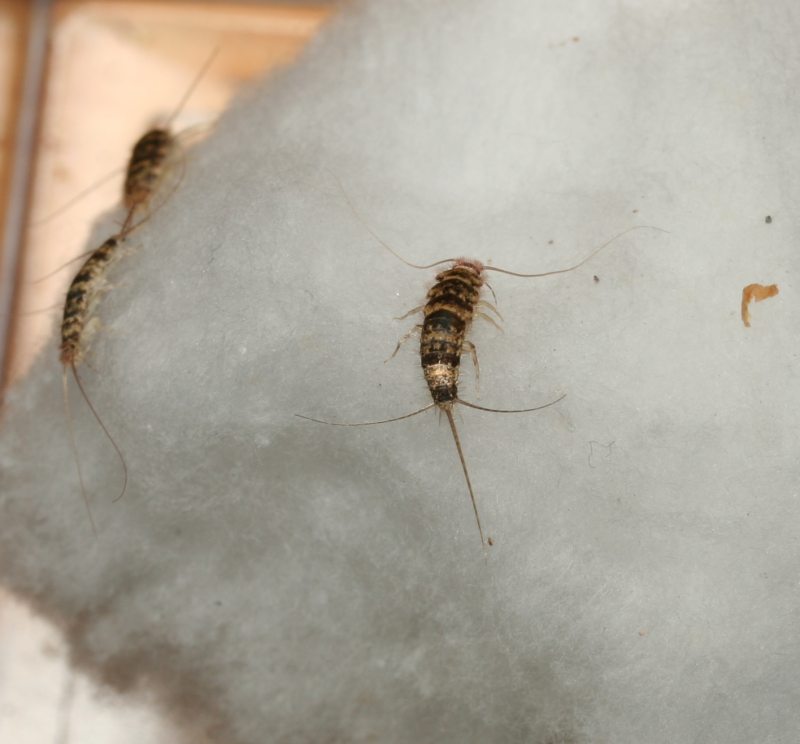- Firebrat
image_width = 250px
regnum =Animal ia
phylum =Arthropod a
classis =Insect a
ordo =Thysanura
familia =Lepismatidae
genus = "Thermobia "
species = "T. domestica"
binomial = "Thermobia domestica"
binomial_authority = Packard, 1873The Firebrat ("Thermobia domestica", sometimes listed as "Thermophila furnorum") is a small insect (typically 1–1.5 cm) similar to the
Silverfish , both in the orderThysanura .Firebrats prefer higher temperatures and require some
humidity , and can be found in bakeries and near boilers orfurnaces . They feed on a wide variety of carbohydrates and starches that are also protein sources such asflour andbook binding s, and can go for as much as a year without eating. They are distributed throughout most parts of the world and are normally found outdoors under rocks, leaf litter, and similar, but are also often found indoors where they are considered pests. They are primarily a nuisance inside the home or buildings, as they don't cause major damage, though they can contaminate food, damage paper goods, and stain clothing. Otherwise they are mostly harmless.At 1½ to 4½ months of age the female firebrat begins laying eggs if the temperature is right (90–106 °F or 32–41 °C). She may lay up to 195 eggs in a lifetime. After incubation (12-13 days), the nymphs hatch. The complete life cycle may be passed in 2 to 4 months; thus several generations may result each year.
References
* [http://www.ext.vt.edu/departments/entomology/factsheets/firebrat.html Firebrat - from the Virginia Cooperative Extension]
* [http://schoolipm.ifas.ufl.edu/tp12.htm Technical Information - Pests, IPM for Silverfish, Firebrats, and Booklice in Schools.] Powell 1998 Ed.External References
* [http://www.oznet.ksu.edu/library/entml2/ep123.pdf Silverfish and Firebrats, Kansas State University]
Wikimedia Foundation. 2010.

